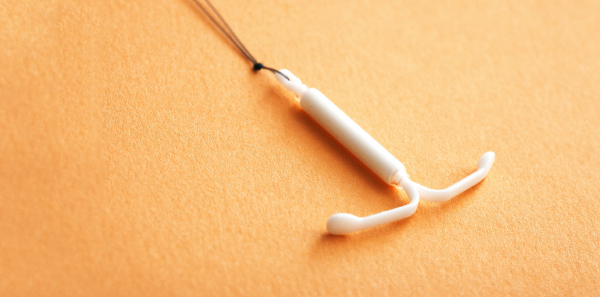
Immediate Complications of the IUD Insertion Procedure
Some patients may develop pain with IUD insertion. Nulliparity and history of severe dysmenorrhea are associated with greater insertion-related pain.4 Some pain, such as cramping and changes in bleeding pattern, may be normal in the initial weeks after IUD placement. Some patients may develop vasovagal reactions with syncope, nausea, and/or vomiting. Because primary uterine perforation can occur during insertion and cause severe pain, these patients may need to be evaluated with pelvic examination and further imaging to assess IUD location and determine if primary perforation has occurred. IUDs can lead to irregular menstrual bleeding, which typically improves with time.5 For these patients, nonsteroidal anti-inflammatory medications are first-line therapies for treating dysmenorrhea and abnormal bleeding.4 Naproxen in particular has been shown to decrease pain and bleeding.1
Explore This Issue
ACEP Now: Vol 38 – No 09 – September 2019IUD Removal in the ED
IUDs rarely require removal in the emergency department. Some circumstances do require this, including a partially expelled IUD causing pain and bleeding. The procedure for IUD removal is simple: Grasp the strings securely using ring forceps and apply gentle traction outward. If IUD removal with gentle traction and without resistance is unsuccessful, the procedure should be discontinued as the IUD may be embedded, perforated, or translocated. Such instances likely require hysteroscopy or laparoscopy for further evaluation.
Case Resolution
A point-of-care urine pregnancy test is positive. Pelvic examination shows a closed cervical os with IUD strings visible, no vaginal bleeding, and left adnexal tenderness. Point-of-care ultrasound shows an empty uterus, no free fluid, and possible left adnexal mass. The patient is taken to the operating room by ob-gyn for diagnostic laparoscopy, leading to the diagnosis of a left adnexal unruptured ectopic pregnancy. Salpingectomy is performed. The patient is discharged from the hospital and later decides to have her IUD removed as an outpatient because of anxiety related to possibility of developing a future ectopic pregnancy.
Dr. Goett is an assistant professor and assistant director for advanced chronic illness and bioethics in the departments of senior residents emergency medicine and palliative care at New Jersey Medical School and Rutgers University in Newark.
Dr. Shaker is a senior resident in emergency medicine at New Jersey Medical School and Rutgers University.
References
- Committee on Practice Bulletins-Gynecology, Long-Acting Reversible Contraception Work Group. Practice bulletin No. 186: long-acting reversible contraception: implants and intrauterine devices. Obstet Gynecol. 2017;130:e251-e269.
- Kho KA, Chamsy DJ. Perforated intraperitoneal intrauterine contraceptive devices: diagnosis, management, and clinical outcomes. J Minim Invasive Gynecol. 2014;21(4):596-601.
- Cheung M, Rezai S, Jackman JM, et al. Retained intrauterine device (IUD): triple case report and review of the literature. Case Rep Obstet Gynecol. 2018;2018:9362962.
- Hillard PJA. Practical tips for intrauterine device counselling, insertion, and pain relief in adolescents: an update [published online ahead of print Feb. 22, 2019]. J Pediatr Adolesc Gynecol.
- American College of Obstetricians and Gynecologists’ Committee on Gynecologic Practice; Long-Acting Reversible Contraceptive Expert Work Group. Committee opinion No. 672: clinical challenges of long-acting reversible contraceptive methods. Obstet Gynecol. 2016;128(3):e69-77.
- Brahmi D, Steenland MW, Renner RM, et al. Pregnancy outcomes with an IUD in situ: a systematic review. Contraception. 2012;85(2):131-139.
- Neth MR, Thompson MA, Gibson CB, et al. Ruptured ectopic pregnancy in the presence of an intrauterine device. Clin Pract Cases Emerg Med. 2018;3(1):51-54.
- Jatlaoui TC, Simmons KB, Curtis KM. The safety of intrauterine contraception initiation among women with current asymptomatic cervical infections or at increased risk of sexually transmitted infections. Contraception. 2016;94(6):701-712.
- Heinemann K, Reed S, Moehner S, et al. Risk of uterine perforation with levonorgestrel-releasing and copper intrauterine devices in the European Active Surveillance Study on Intrauterine Devices. Contraception. 2015;91(4):274-279.
- Godfrey EM, Folger SG, Jeng G, et al. Treatment of bleeding irregularities in women with copper-containing IUDs: a systematic review. Contraception. 2013;87(5):549-566.
- Heinemann K, Reed S, Moehner S, et al. Comparative contraceptive effectiveness of levonorgestrel-releasing and copper intrauterine devices: the European Active Surveillance Study for Intrauterine Devices. Contraception. 2015;91(4):280-283.
- Jatlaoui TC, Riley HEM, Curtis KM. The safety of intrauterine devices among young women: a systematic review. Contraception. 2017;95(1):17-39.
Pages: 1 2 3 4 | Single Page




No Responses to “How to Approach Patients Who Have an Intrauterine Device”